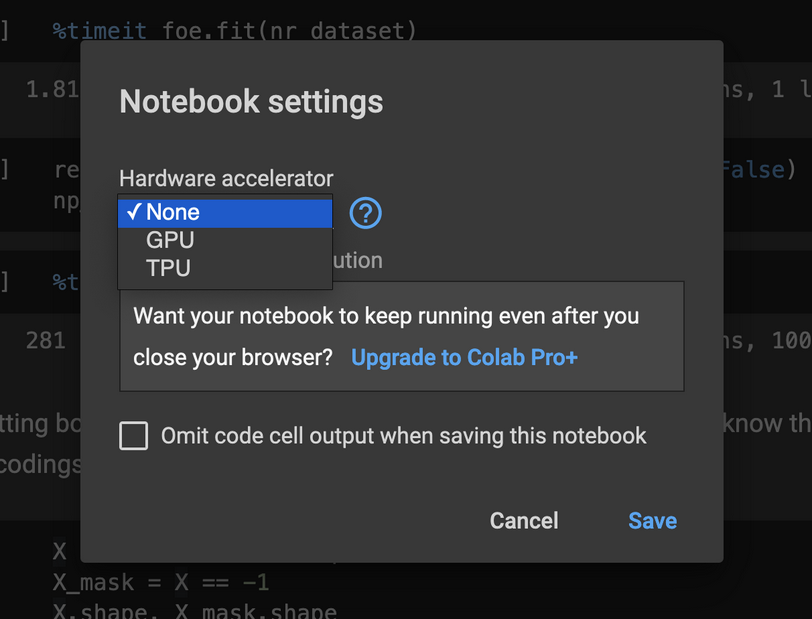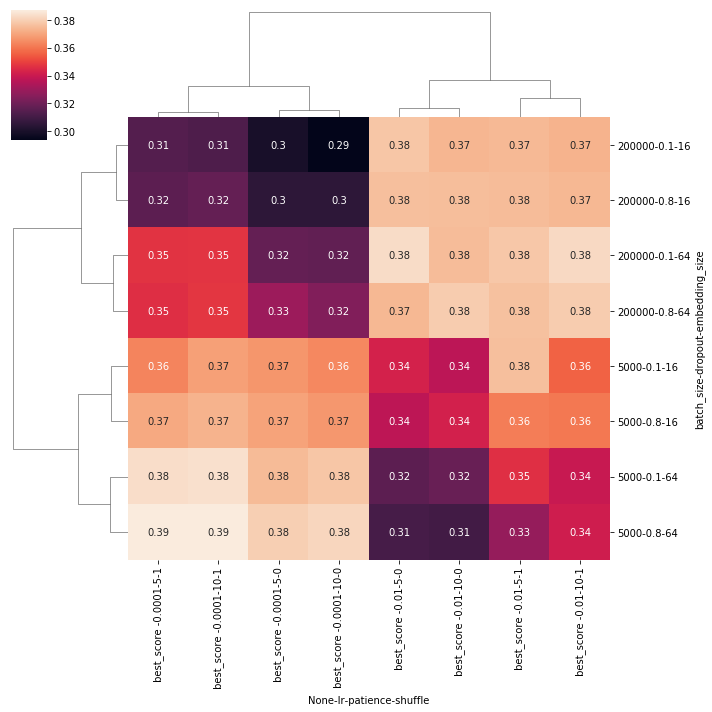Mnist classification
%matplotlib inline
import numpy as np
import utils; reload(utils)
from utils import plots
from matplotlib import pyplot as plt
Download the MNIST dataset
from keras.datasets import mnist
(x_train, y_train), (x_test, y_test) = mnist.load_data()
Print some of the data
# Data shape
print(x_train.shape)
# show raw pixels
plt.imshow(x_train[0], cmap='gray')
# plot the first 10 images
plots(x_train[:10])
(60000, 28, 28)


Prepare data for VGG like computations.
First we need to add a color channel to all images.
X = np.expand_dims(x_train, 1)
print(X.shape)
X_val = np.expand_dims(x_test, 1)
plots(X[:10], titles=y_train[:10])
(60000, 1, 28, 28)

Then we need to change the labels to one_hot_encodings
def one_hot_encoded(_y):
max_class = np.max(_y)
one_hot = np.zeros((_y.shape[0], max_class+1), dtype=np.float)
for i, clazz in enumerate(_y):
one_hot[i][clazz] = 1
return one_hot
y_ = one_hot_encoded(y_train)
print(y_train[:10])
print(y_[:10])
[5 0 4 1 9 2 1 3 1 4]
[[ 0. 0. 0. 0. 0. 1. 0. 0. 0. 0.]
[ 1. 0. 0. 0. 0. 0. 0. 0. 0. 0.]
[ 0. 0. 0. 0. 1. 0. 0. 0. 0. 0.]
[ 0. 1. 0. 0. 0. 0. 0. 0. 0. 0.]
[ 0. 0. 0. 0. 0. 0. 0. 0. 0. 1.]
[ 0. 0. 1. 0. 0. 0. 0. 0. 0. 0.]
[ 0. 1. 0. 0. 0. 0. 0. 0. 0. 0.]
[ 0. 0. 0. 1. 0. 0. 0. 0. 0. 0.]
[ 0. 1. 0. 0. 0. 0. 0. 0. 0. 0.]
[ 0. 0. 0. 0. 1. 0. 0. 0. 0. 0.]]
The same effect can be obtain by using the keras function bellow
from keras.utils.np_utils import to_categorical
y = to_categorical(y_train)
y_val = to_categorical(y_test)
assert np.allclose(y, y_)
We should also normalize the inputs by substracting the mean and dividing by the standard_deviation. The mean and std should be computed on all the features at once, because the goal is to make all the features be on the same order of magnitude (so that the training converges faster).
x_mean = np.mean(X).astype(np.float)
x_std = np.std(X).astype(np.float)
def normalize_input(X):
return (X - x_mean) / x_std
Build a first really simple model, a linear regressor
from keras.models import Sequential
from keras.layers.core import Lambda
from keras.layers import Dense, InputLayer, Flatten
from keras.optimizers import Adam
model = Sequential([
Lambda(normalize_input, input_shape=(1, 28, 28)),
Flatten(),
Dense(10, activation='softmax')
])
model.compile(Adam(), loss='categorical_crossentropy', metrics=['accuracy'])
model.fit(X, y, nb_epoch=10, validation_data=(X_val, y_val))
Train on 60000 samples, validate on 10000 samples
Epoch 1/10
60000/60000 [==============================] - 4s - loss: 0.3911 - acc: 0.8854 - val_loss: 0.2899 - val_acc: 0.9159
Epoch 2/10
60000/60000 [==============================] - 3s - loss: 0.2993 - acc: 0.9153 - val_loss: 0.2902 - val_acc: 0.9158
Epoch 3/10
60000/60000 [==============================] - 3s - loss: 0.2881 - acc: 0.9190 - val_loss: 0.2794 - val_acc: 0.9243
Epoch 4/10
60000/60000 [==============================] - 3s - loss: 0.2801 - acc: 0.9215 - val_loss: 0.2932 - val_acc: 0.9185
Epoch 5/10
60000/60000 [==============================] - 3s - loss: 0.2774 - acc: 0.9227 - val_loss: 0.2764 - val_acc: 0.9235
Epoch 6/10
60000/60000 [==============================] - 3s - loss: 0.2742 - acc: 0.9244 - val_loss: 0.2835 - val_acc: 0.9210
Epoch 7/10
60000/60000 [==============================] - 3s - loss: 0.2715 - acc: 0.9250 - val_loss: 0.2967 - val_acc: 0.9173
Epoch 8/10
60000/60000 [==============================] - 3s - loss: 0.2684 - acc: 0.9250 - val_loss: 0.2881 - val_acc: 0.9211
Epoch 9/10
60000/60000 [==============================] - 3s - loss: 0.2674 - acc: 0.9253 - val_loss: 0.2882 - val_acc: 0.9225
Epoch 10/10
60000/60000 [==============================] - 3s - loss: 0.2660 - acc: 0.9255 - val_loss: 0.2871 - val_acc: 0.9231
<keras.callbacks.History at 0x7fb48115bf90>
A model with one hidden layer
model = Sequential([
Lambda(normalize_input, input_shape=(1, 28, 28)),
Flatten(),
Dense(100, activation='sigmoid'),
Dense(10, activation='softmax')
])
model.compile(Adam(), loss='categorical_crossentropy', metrics=['accuracy'])
model.fit(X, y, validation_data=(X_val, y_val))
Train on 60000 samples, validate on 10000 samples
Epoch 1/10
60000/60000 [==============================] - 6s - loss: 0.3240 - acc: 0.9119 - val_loss: 0.1898 - val_acc: 0.9435
Epoch 2/10
60000/60000 [==============================] - 6s - loss: 0.1578 - acc: 0.9546 - val_loss: 0.1424 - val_acc: 0.9582
Epoch 3/10
60000/60000 [==============================] - 6s - loss: 0.1139 - acc: 0.9677 - val_loss: 0.1162 - val_acc: 0.9660
Epoch 4/10
60000/60000 [==============================] - 6s - loss: 0.0883 - acc: 0.9752 - val_loss: 0.1031 - val_acc: 0.9690
Epoch 5/10
60000/60000 [==============================] - 6s - loss: 0.0715 - acc: 0.9797 - val_loss: 0.1037 - val_acc: 0.9694
Epoch 6/10
60000/60000 [==============================] - 6s - loss: 0.0594 - acc: 0.9838 - val_loss: 0.0867 - val_acc: 0.9737
Epoch 7/10
60000/60000 [==============================] - 6s - loss: 0.0500 - acc: 0.9859 - val_loss: 0.0889 - val_acc: 0.9726
Epoch 8/10
60000/60000 [==============================] - 6s - loss: 0.0414 - acc: 0.9894 - val_loss: 0.0897 - val_acc: 0.9729
Epoch 9/10
60000/60000 [==============================] - 6s - loss: 0.0359 - acc: 0.9906 - val_loss: 0.0805 - val_acc: 0.9753
Epoch 10/10
60000/60000 [==============================] - 6s - loss: 0.0304 - acc: 0.9923 - val_loss: 0.0829 - val_acc: 0.9756
<keras.callbacks.History at 0x7fb480d87bd0>
A model with convolutions
from keras.layers.convolutional import Convolution2D, MaxPooling2D
model = Sequential([
Lambda(normalize_input, input_shape=(1, 28, 28)),
Convolution2D(7, 3, 3, activation='relu', border_mode='same'),
Convolution2D(7, 3, 3, activation='relu', border_mode='same'),
MaxPooling2D(pool_size=(2,2), strides=(2,2), dim_ordering='tf'),
Convolution2D(14, 3, 3, activation='relu', border_mode='same'),
Convolution2D(14, 3, 3, activation='relu', border_mode='same'),
MaxPooling2D(pool_size=(2,2), strides=(2,2), dim_ordering='tf'),
Convolution2D(28, 3, 3, activation='relu', border_mode='same'),
Convolution2D(28, 3, 3, activation='relu', border_mode='same'),
Convolution2D(28, 3, 3, activation='relu', border_mode='same'),
MaxPooling2D(pool_size=(2,2), strides=(2,2), dim_ordering='tf'),
Convolution2D(56, 3, 3, activation='relu', border_mode='same'),
Convolution2D(56, 3, 3, activation='relu', border_mode='same'),
Convolution2D(56, 3, 3, activation='relu', border_mode='same'),
MaxPooling2D(pool_size=(2,2), strides=(2,2), dim_ordering='tf'),
Flatten(),
Dense(100, activation='sigmoid'),
Dense(10, activation='softmax')
])
model.compile(Adam(), loss='categorical_crossentropy', metrics=['accuracy'])
model.fit(X, y, validation_data=(X_val, y_val), nb_epoch=1)
Train on 60000 samples, validate on 10000 samples
Epoch 1/1
60000/60000 [==============================] - 570s - loss: 0.2619 - acc: 0.9223 - val_loss: 0.1007 - val_acc: 0.9684
<keras.callbacks.History at 0x7fb47bcf8850>
Do some training data augmentation
from keras.preprocessing.image import ImageDataGenerator
gen = ImageDataGenerator(rotation_range=10, zoom_range=0.1, shear_range=0.1, dim_ordering='th')
batch_gen = gen.flow(X, y)
img, _ = next(batch_gen)
plots(img[:10])

model.optimizer.lr=0.001
model.fit_generator(batch_gen, batch_gen.n, nb_epoch=1, validation_data=(X_val, y_val))
Epoch 1/1
60000/60000 [==============================] - 573s - loss: 0.1227 - acc: 0.9621 - val_loss: 0.1090 - val_acc: 0.9633
<keras.callbacks.History at 0x7fb47ac37550>
Add Dropout for better regularization
from keras.layers import Dense
from keras.layers.core import Dropout
from keras.layers.convolutional import Convolution2D, MaxPooling2D
model = Sequential([
Lambda(normalize_input, input_shape=(1, 28, 28)),
Convolution2D(10, 3, 3, activation='relu', border_mode='same'),
Convolution2D(10, 3, 3, activation='relu', border_mode='same'),
MaxPooling2D(pool_size=(2,2), strides=(2,2), dim_ordering='th'),
Convolution2D(20, 3, 3, activation='relu', border_mode='same'),
Convolution2D(20, 3, 3, activation='relu', border_mode='same'),
MaxPooling2D(pool_size=(2,2), strides=(2,2), dim_ordering='th'),
Convolution2D(40, 3, 3, activation='relu', border_mode='same'),
Convolution2D(40, 3, 3, activation='relu', border_mode='same'),
MaxPooling2D(pool_size=(2,2), strides=(2,2), dim_ordering='th'),
Flatten(),
Dense(400, activation='relu'),
Dropout(0.5),
Dense(400, activation='relu'),
Dropout(0.6),
Dense(10, activation='softmax')
])
model.compile(Adam(lr=0.001), loss='categorical_crossentropy', metrics=['accuracy'])
model.summary()
model.fit_generator(batch_gen, batch_gen.n, nb_epoch=1, validation_data=(X_val, y_val))
____________________________________________________________________________________________________
Layer (type) Output Shape Param # Connected to
====================================================================================================
lambda_38 (Lambda) (None, 1, 28, 28) 0 lambda_input_37[0][0]
____________________________________________________________________________________________________
convolution2d_269 (Convolution2D (None, 10, 28, 28) 100 lambda_38[0][0]
____________________________________________________________________________________________________
convolution2d_270 (Convolution2D (None, 10, 28, 28) 910 convolution2d_269[0][0]
____________________________________________________________________________________________________
maxpooling2d_106 (MaxPooling2D) (None, 10, 14, 14) 0 convolution2d_270[0][0]
____________________________________________________________________________________________________
convolution2d_271 (Convolution2D (None, 20, 14, 14) 1820 maxpooling2d_106[0][0]
____________________________________________________________________________________________________
convolution2d_272 (Convolution2D (None, 20, 14, 14) 3620 convolution2d_271[0][0]
____________________________________________________________________________________________________
maxpooling2d_107 (MaxPooling2D) (None, 20, 7, 7) 0 convolution2d_272[0][0]
____________________________________________________________________________________________________
convolution2d_273 (Convolution2D (None, 40, 7, 7) 7240 maxpooling2d_107[0][0]
____________________________________________________________________________________________________
convolution2d_274 (Convolution2D (None, 40, 7, 7) 14440 convolution2d_273[0][0]
____________________________________________________________________________________________________
maxpooling2d_108 (MaxPooling2D) (None, 40, 3, 3) 0 convolution2d_274[0][0]
____________________________________________________________________________________________________
flatten_36 (Flatten) (None, 360) 0 maxpooling2d_108[0][0]
____________________________________________________________________________________________________
dense_86 (Dense) (None, 400) 144400 flatten_36[0][0]
____________________________________________________________________________________________________
dropout_44 (Dropout) (None, 400) 0 dense_86[0][0]
____________________________________________________________________________________________________
dense_87 (Dense) (None, 400) 160400 dropout_44[0][0]
____________________________________________________________________________________________________
dropout_45 (Dropout) (None, 400) 0 dense_87[0][0]
____________________________________________________________________________________________________
dense_88 (Dense) (None, 10) 4010 dropout_45[0][0]
====================================================================================================
Total params: 336,940
Trainable params: 336,940
Non-trainable params: 0
____________________________________________________________________________________________________
Epoch 1/1
60000/60000 [==============================] - 343s - loss: 0.2592 - acc: 0.9191 - val_loss: 0.0468 - val_acc: 0.9849
<keras.callbacks.History at 0x7fb44b2bba10>
Adding the batch normalisation
from keras.layers import Dense
from keras.layers.core import Dropout
from keras.layers.convolutional import Convolution2D, MaxPooling2D
from keras.layers.normalization import BatchNormalization
model = Sequential([
Lambda(normalize_input, input_shape=(1, 28, 28)),
Convolution2D(10, 3, 3, activation='relu', border_mode='same'),
BatchNormalization(axis=1),
Convolution2D(10, 3, 3, activation='relu', border_mode='same'),
BatchNormalization(axis=1),
MaxPooling2D(pool_size=(2,2), strides=(2,2), dim_ordering='th'),
Convolution2D(20, 3, 3, activation='relu', border_mode='same'),
BatchNormalization(axis=1),
Convolution2D(20, 3, 3, activation='relu', border_mode='same'),
BatchNormalization(axis=1),
MaxPooling2D(pool_size=(2,2), strides=(2,2), dim_ordering='th'),
Convolution2D(40, 3, 3, activation='relu', border_mode='same'),
BatchNormalization(axis=1),
Convolution2D(40, 3, 3, activation='relu', border_mode='same'),
BatchNormalization(axis=1),
MaxPooling2D(pool_size=(2,2), strides=(2,2), dim_ordering='th'),
Flatten(),
Dense(400, activation='relu'),
BatchNormalization(),
Dropout(0.5),
Dense(400, activation='relu'),
BatchNormalization(),
Dropout(0.6),
Dense(10, activation='softmax')
])
model.compile(Adam(lr=0.001), loss='categorical_crossentropy', metrics=['accuracy'])
model.summary()
model.fit_generator(batch_gen, batch_gen.n, nb_epoch=1, validation_data=(X_val, y_val))
____________________________________________________________________________________________________
Layer (type) Output Shape Param # Connected to
====================================================================================================
lambda_41 (Lambda) (None, 1, 28, 28) 0 lambda_input_40[0][0]
____________________________________________________________________________________________________
convolution2d_287 (Convolution2D (None, 10, 28, 28) 100 lambda_41[0][0]
____________________________________________________________________________________________________
batchnormalization_17 (BatchNorm (None, 10, 28, 28) 40 convolution2d_287[0][0]
____________________________________________________________________________________________________
convolution2d_288 (Convolution2D (None, 10, 28, 28) 910 batchnormalization_17[0][0]
____________________________________________________________________________________________________
batchnormalization_18 (BatchNorm (None, 10, 28, 28) 40 convolution2d_288[0][0]
____________________________________________________________________________________________________
maxpooling2d_115 (MaxPooling2D) (None, 10, 14, 14) 0 batchnormalization_18[0][0]
____________________________________________________________________________________________________
convolution2d_289 (Convolution2D (None, 20, 14, 14) 1820 maxpooling2d_115[0][0]
____________________________________________________________________________________________________
batchnormalization_19 (BatchNorm (None, 20, 14, 14) 80 convolution2d_289[0][0]
____________________________________________________________________________________________________
convolution2d_290 (Convolution2D (None, 20, 14, 14) 3620 batchnormalization_19[0][0]
____________________________________________________________________________________________________
batchnormalization_20 (BatchNorm (None, 20, 14, 14) 80 convolution2d_290[0][0]
____________________________________________________________________________________________________
maxpooling2d_116 (MaxPooling2D) (None, 20, 7, 7) 0 batchnormalization_20[0][0]
____________________________________________________________________________________________________
convolution2d_291 (Convolution2D (None, 40, 7, 7) 7240 maxpooling2d_116[0][0]
____________________________________________________________________________________________________
batchnormalization_21 (BatchNorm (None, 40, 7, 7) 160 convolution2d_291[0][0]
____________________________________________________________________________________________________
convolution2d_292 (Convolution2D (None, 40, 7, 7) 14440 batchnormalization_21[0][0]
____________________________________________________________________________________________________
batchnormalization_22 (BatchNorm (None, 40, 7, 7) 160 convolution2d_292[0][0]
____________________________________________________________________________________________________
maxpooling2d_117 (MaxPooling2D) (None, 40, 3, 3) 0 batchnormalization_22[0][0]
____________________________________________________________________________________________________
flatten_39 (Flatten) (None, 360) 0 maxpooling2d_117[0][0]
____________________________________________________________________________________________________
dense_95 (Dense) (None, 400) 144400 flatten_39[0][0]
____________________________________________________________________________________________________
batchnormalization_23 (BatchNorm (None, 400) 1600 dense_95[0][0]
____________________________________________________________________________________________________
dropout_50 (Dropout) (None, 400) 0 batchnormalization_23[0][0]
____________________________________________________________________________________________________
dense_96 (Dense) (None, 400) 160400 dropout_50[0][0]
____________________________________________________________________________________________________
batchnormalization_24 (BatchNorm (None, 400) 1600 dense_96[0][0]
____________________________________________________________________________________________________
dropout_51 (Dropout) (None, 400) 0 batchnormalization_24[0][0]
____________________________________________________________________________________________________
dense_97 (Dense) (None, 10) 4010 dropout_51[0][0]
====================================================================================================
Total params: 340,700
Trainable params: 338,820
Non-trainable params: 1,880
____________________________________________________________________________________________________
Epoch 1/1
60000/60000 [==============================] - 802s - loss: 0.3070 - acc: 0.9103 - val_loss: 0.0619 - val_acc: 0.9814
<keras.callbacks.History at 0x7fb432456b10>
model.optimizer.lr=0.0001
model.fit_generator(batch_gen, batch_gen.n, nb_epoch=1, validation_data=(X_val, y_val))
Epoch 1/1
60000/60000 [==============================] - 830s - loss: 0.0785 - acc: 0.9768 - val_loss: 0.0243 - val_acc: 0.9917
<keras.callbacks.History at 0x7fb45a341b10>
Other experiments with preprocessing input data
Adding all three color chanels
# Add two new color channels (for g, b set to 0) that we are going to expand the array on the 1 axis
colors = np.zeros((X.shape[0], 2, X.shape[2], X.shape[3]))
print(colors.shape)
X = np.append(X, colors, axis=1)
print(X.shape)
plots(X[:10])
Experiment with the numpy roll function. I makes take on axis and puts it into the specified final position (start=)
x = X[:3]
print(x.shape)
x = np.rollaxis(x, 2, 1) # get second axis and put into the first axis
print(x.shape)
x = np.rollaxis(x, 3, 2) # get fourth axis(index is 3) and put it onto the third axis (index is 2)
print(x.shape)
# TODO: Merging the three examples into the color channels axis:
# - we need the 3 to be the last axis
# - we need the 1 to ne the first axis (one final image)
x = np.rollaxis(x, 0, 3) # get fourth axis(index is 3) and put it onto the third axis (index is 2)
print(x.shape)
x = np.rollaxis(x, 3, 0) # get fourth axis(index is 3) and put it onto the third axis (index is 2)
print(x.shape)
# if we print now the image, we should see the three numbers initialy selected, merged into one
# each on a different channel (one on the red, one on the green, one on the blue)
plots(x)
(3, 1, 28, 28)
(3, 28, 1, 28)
(3, 28, 28, 1)
(28, 28, 3, 1)
(1, 28, 28, 3)




Comments